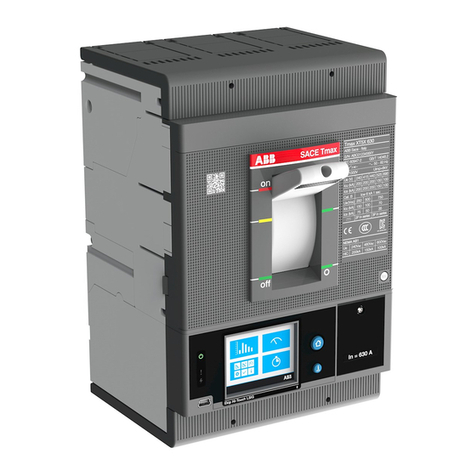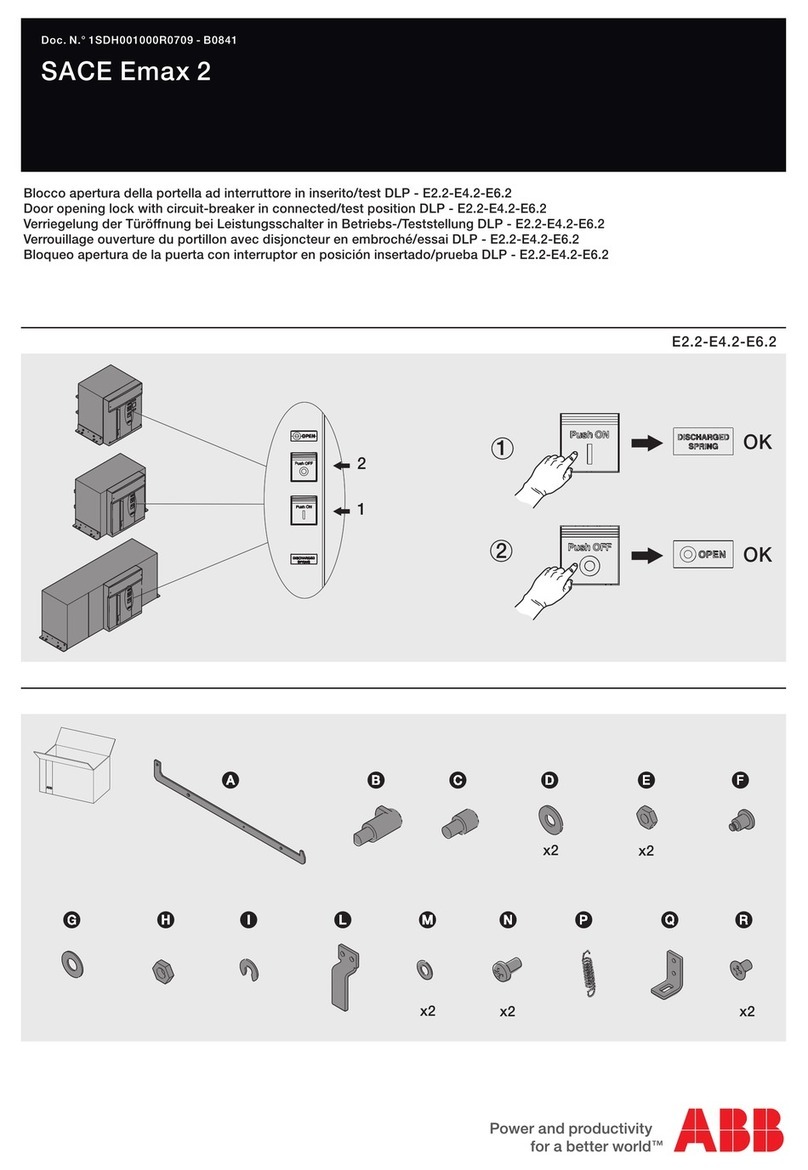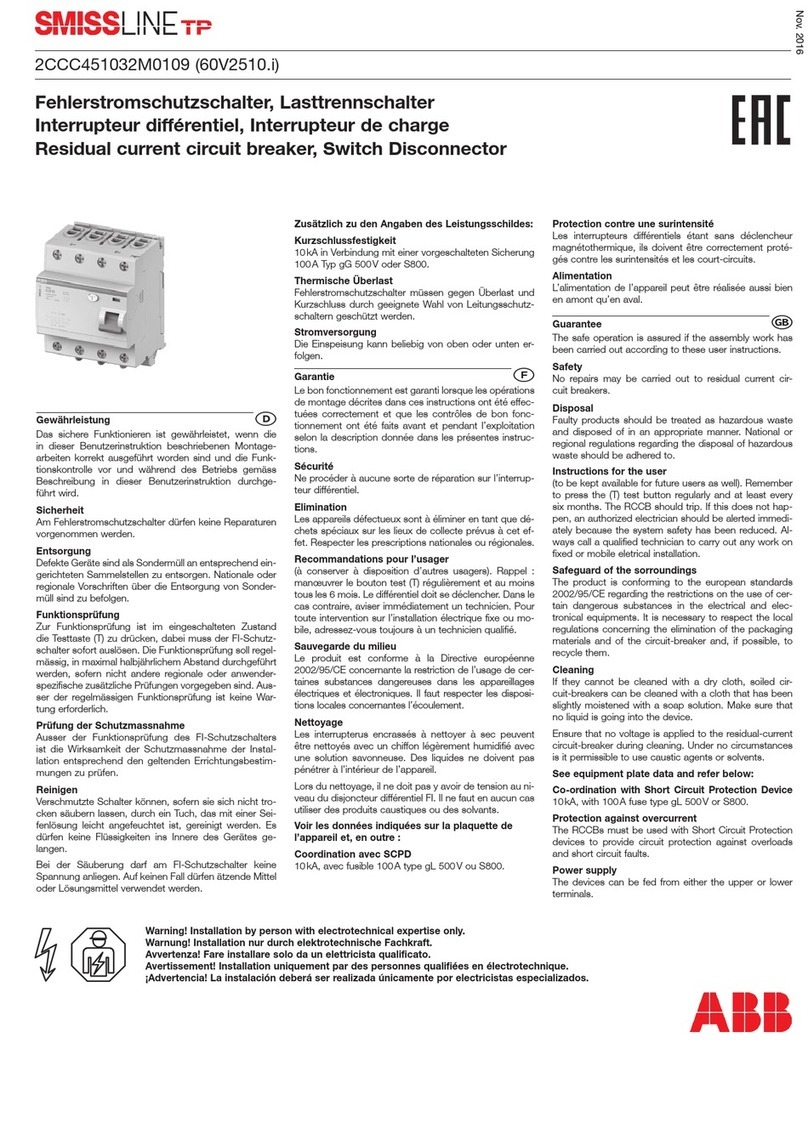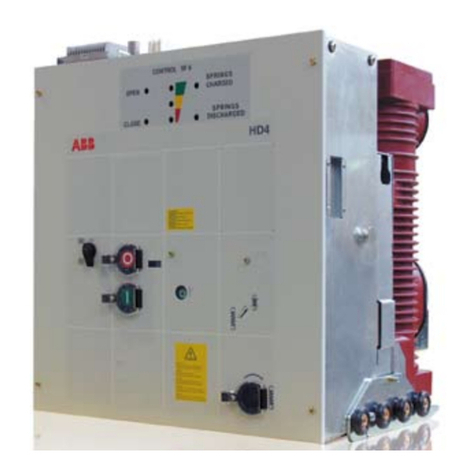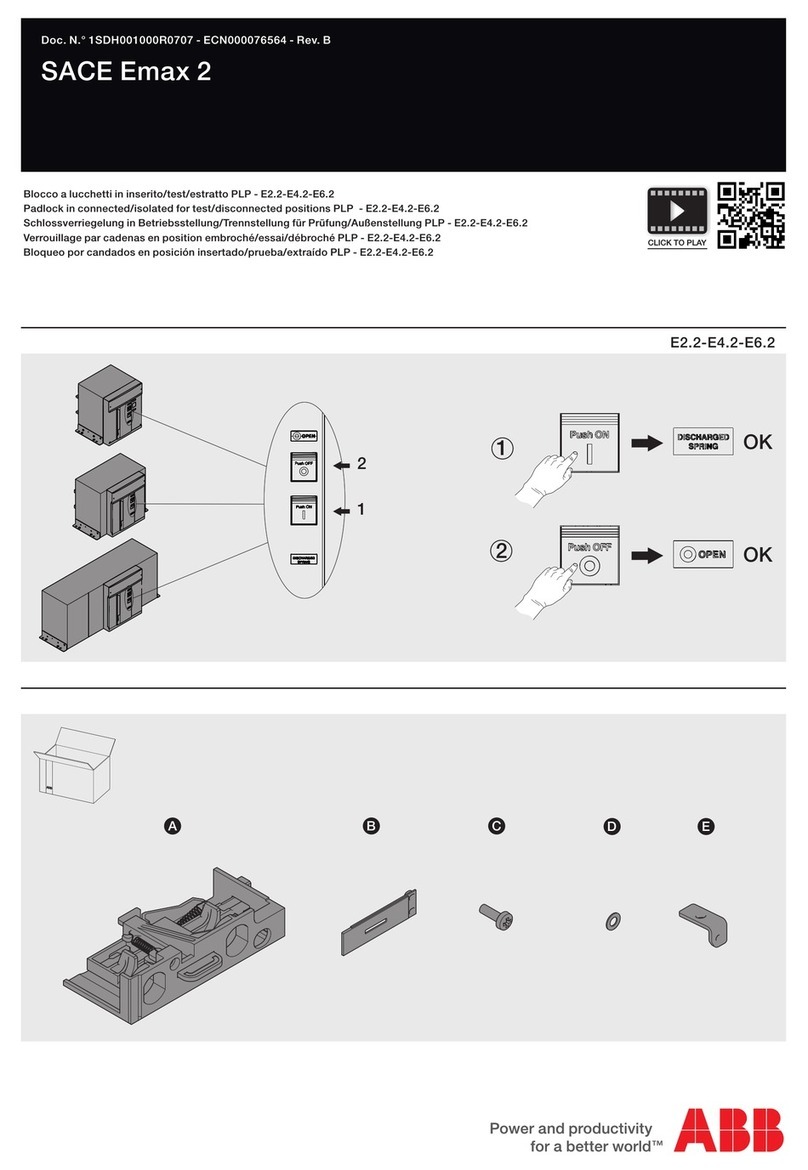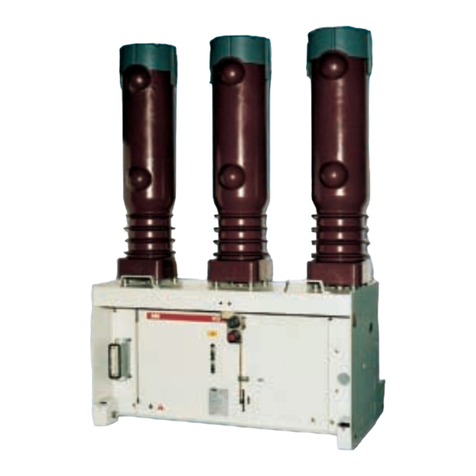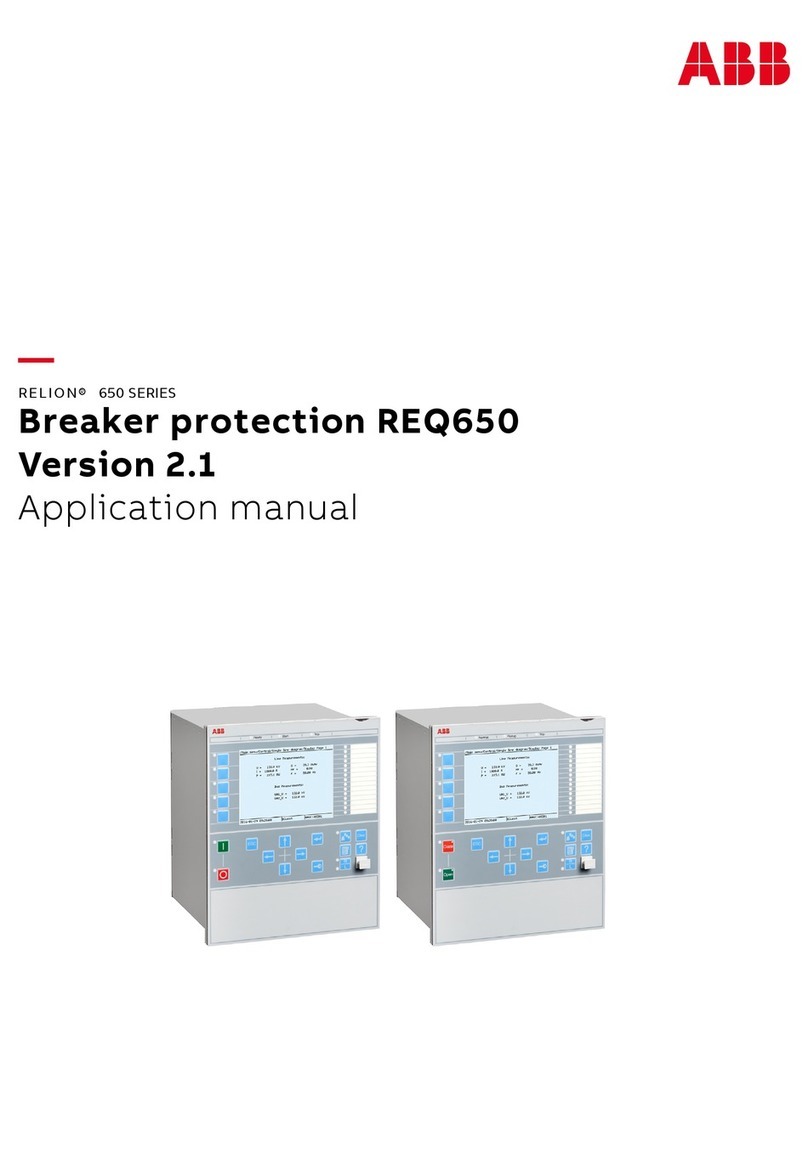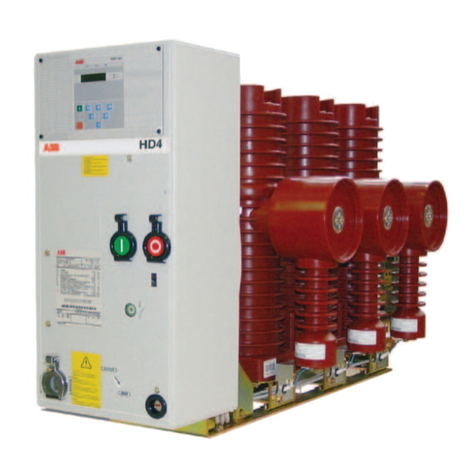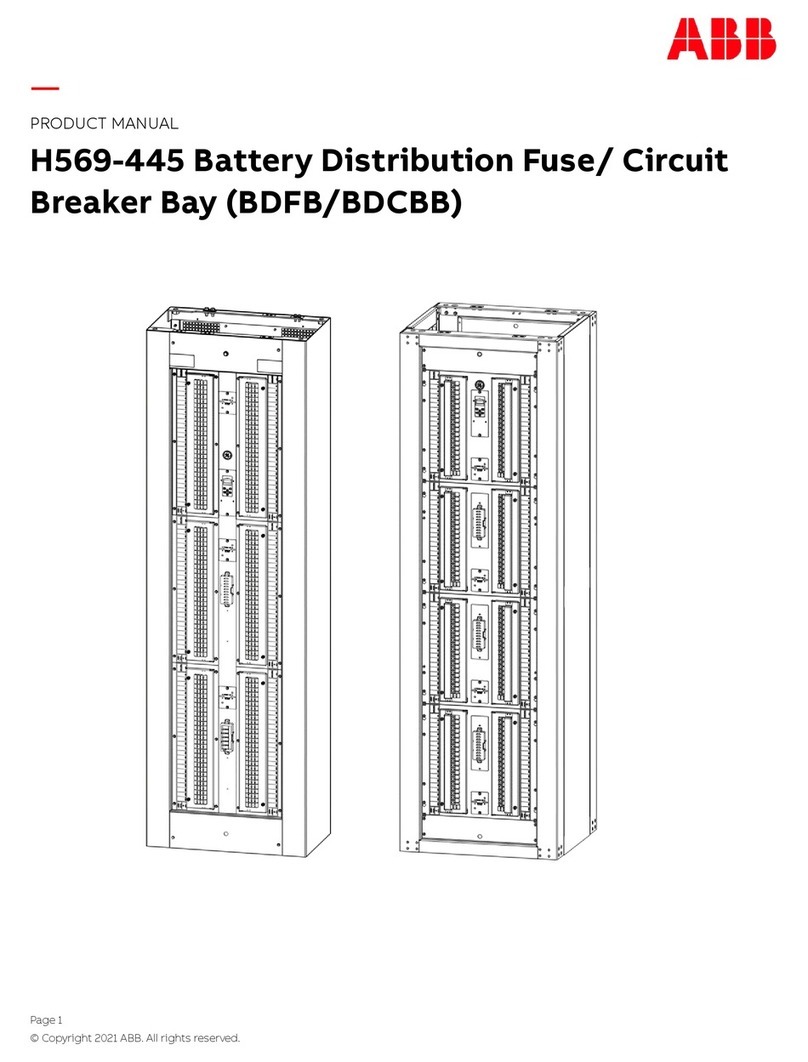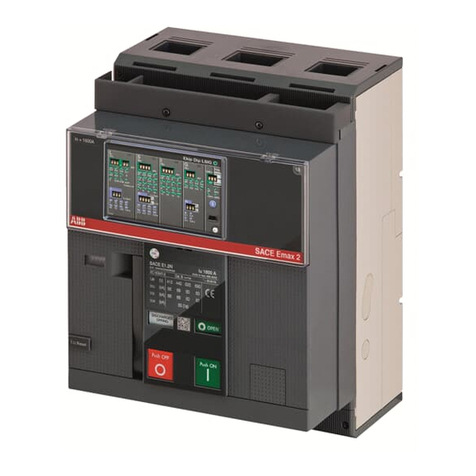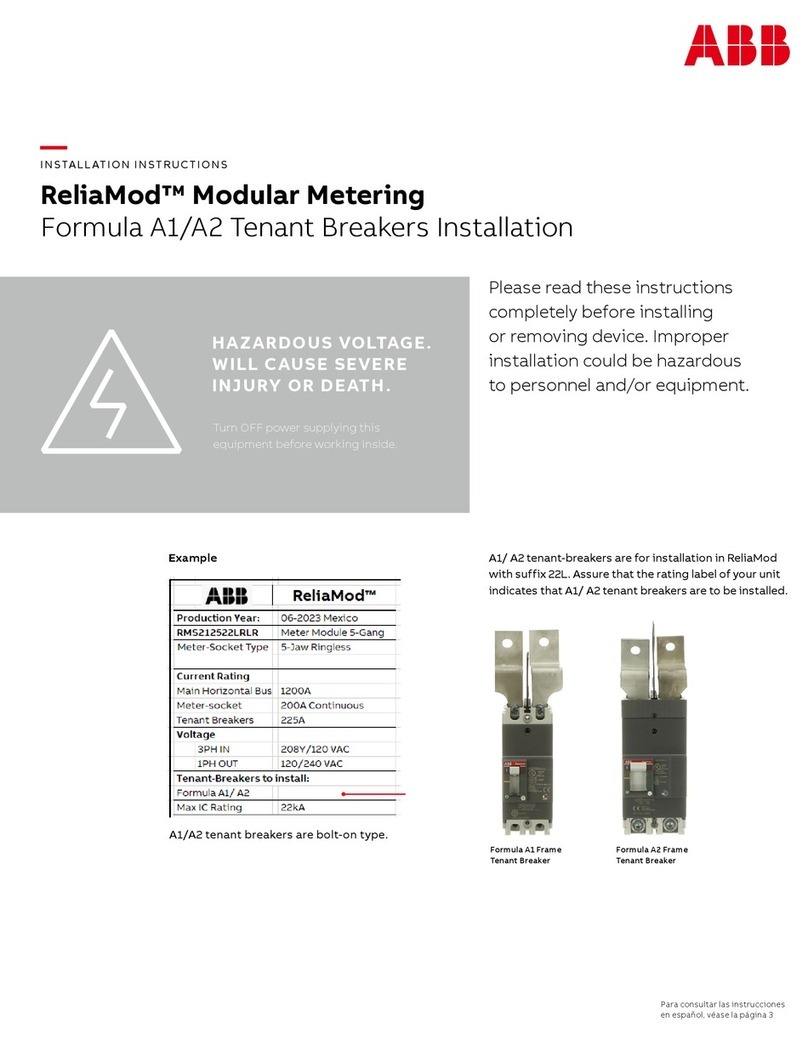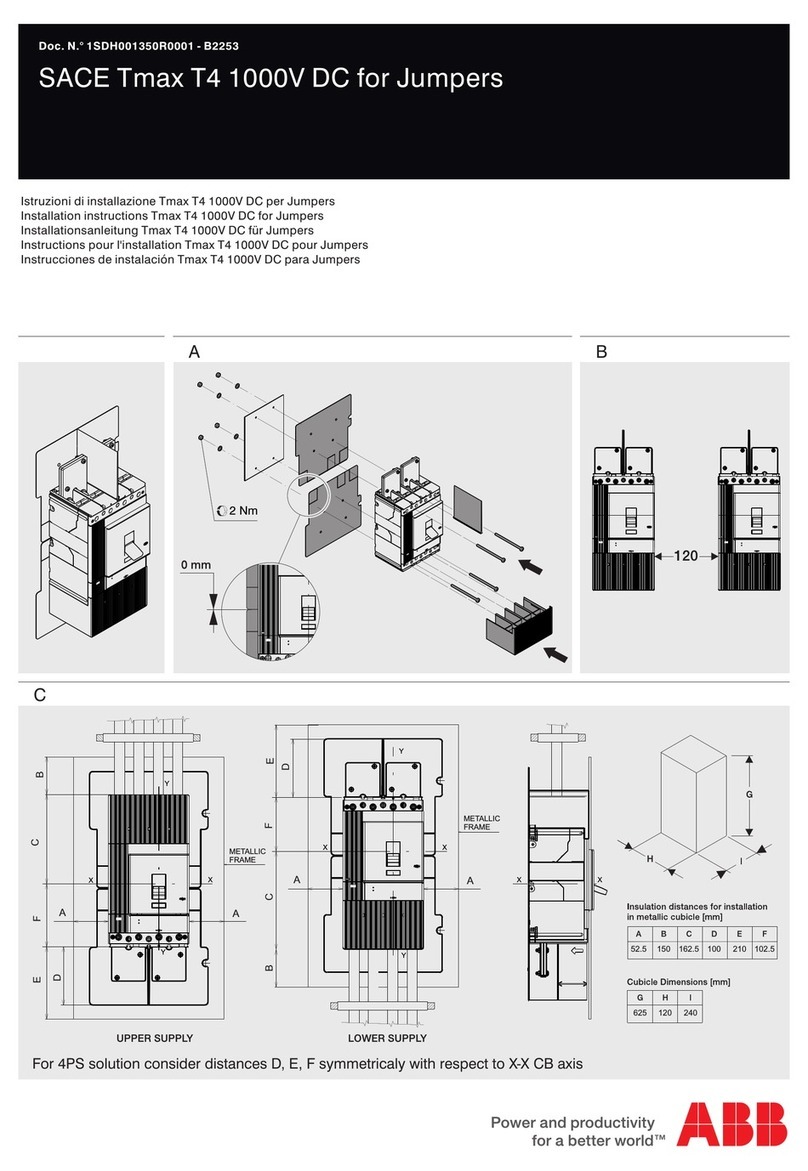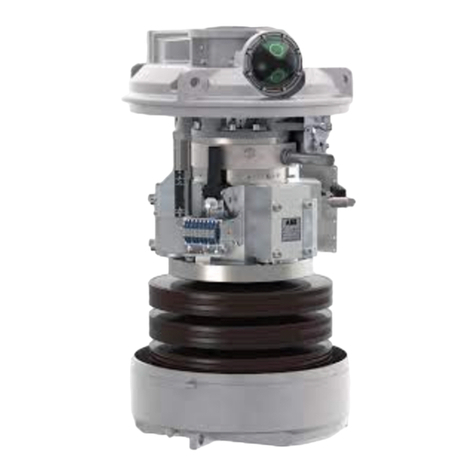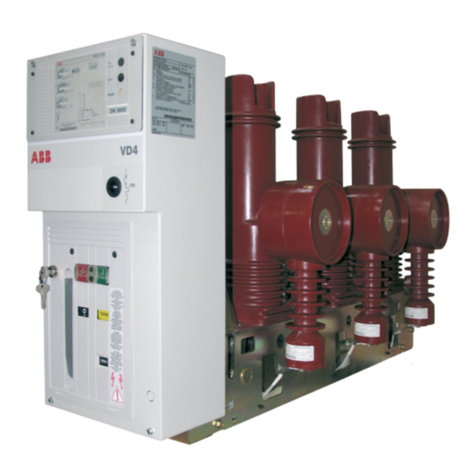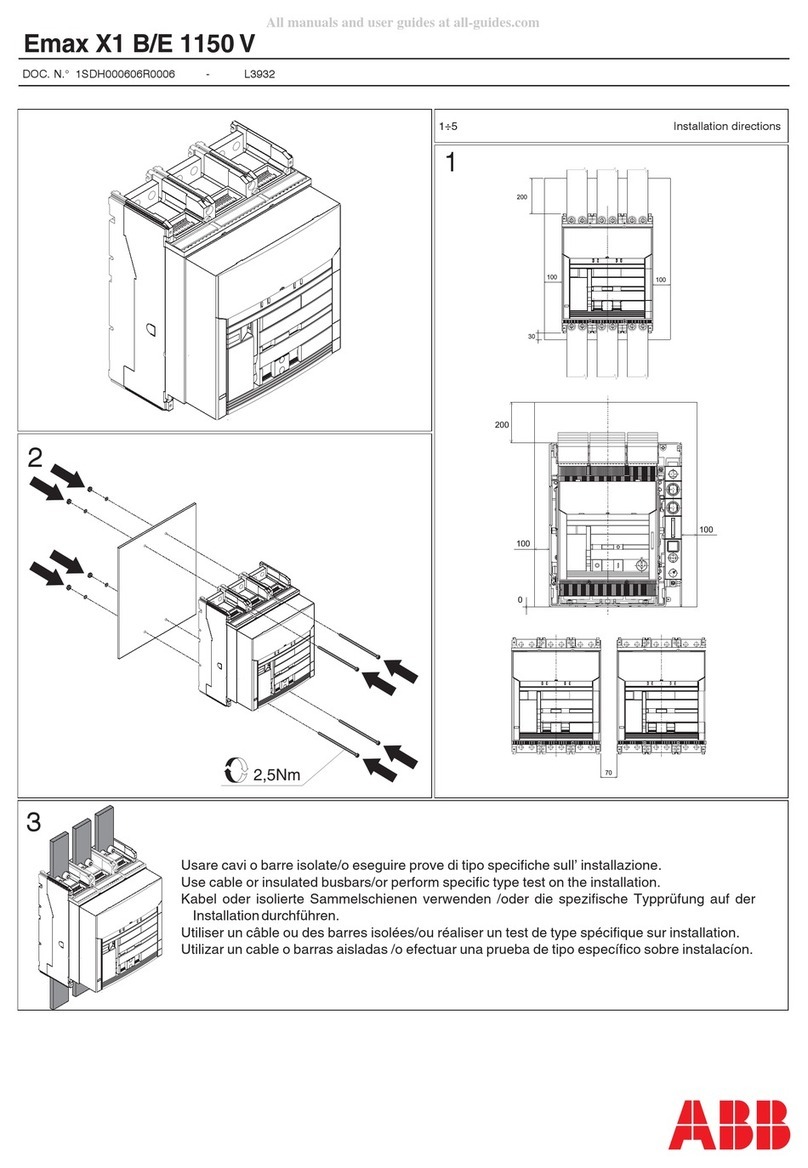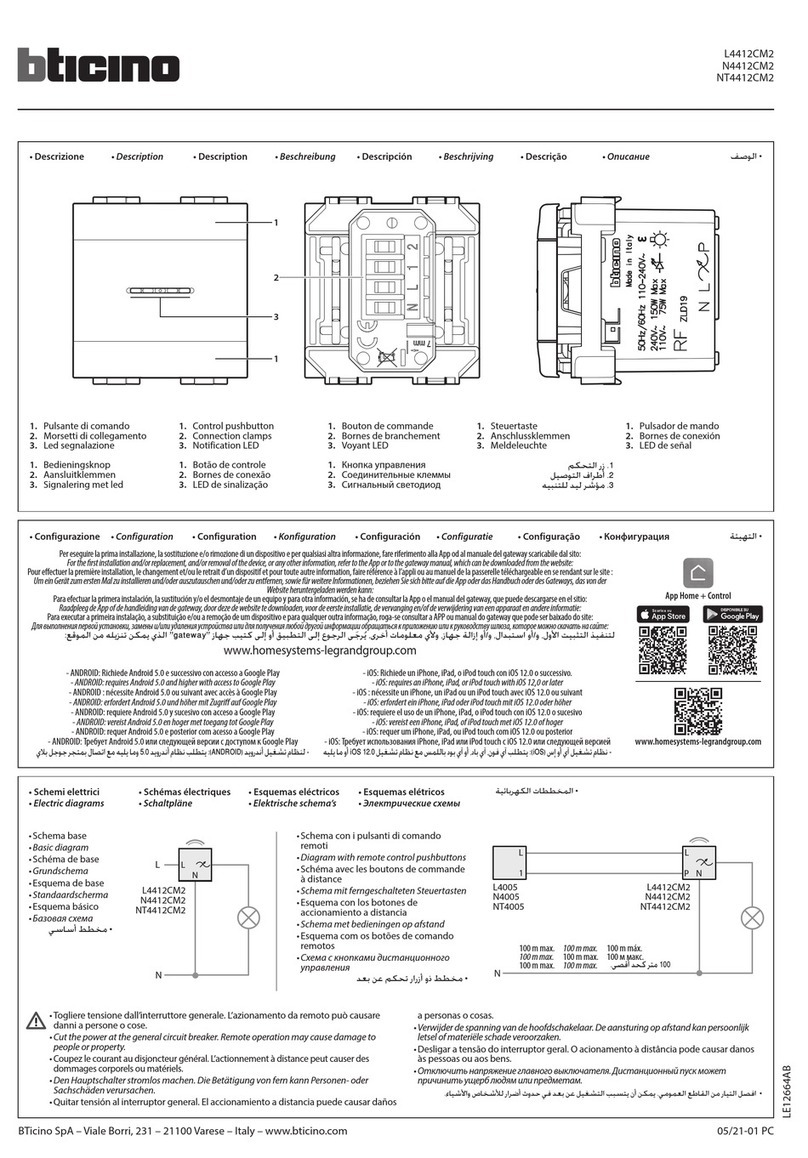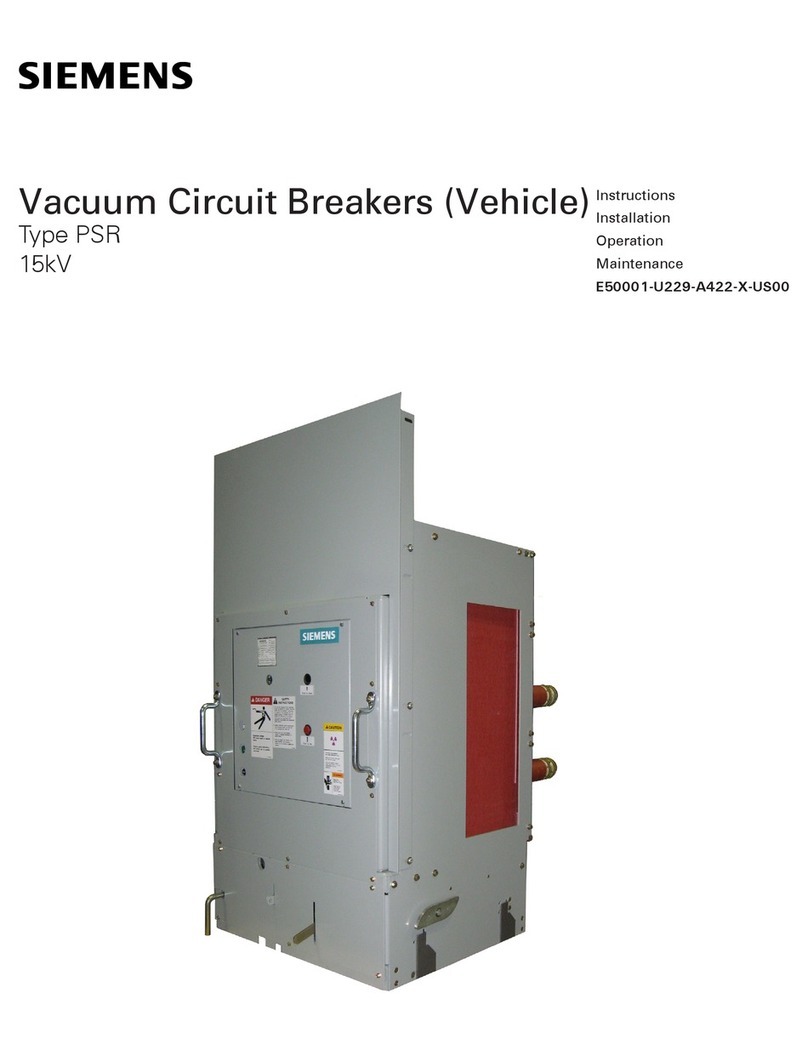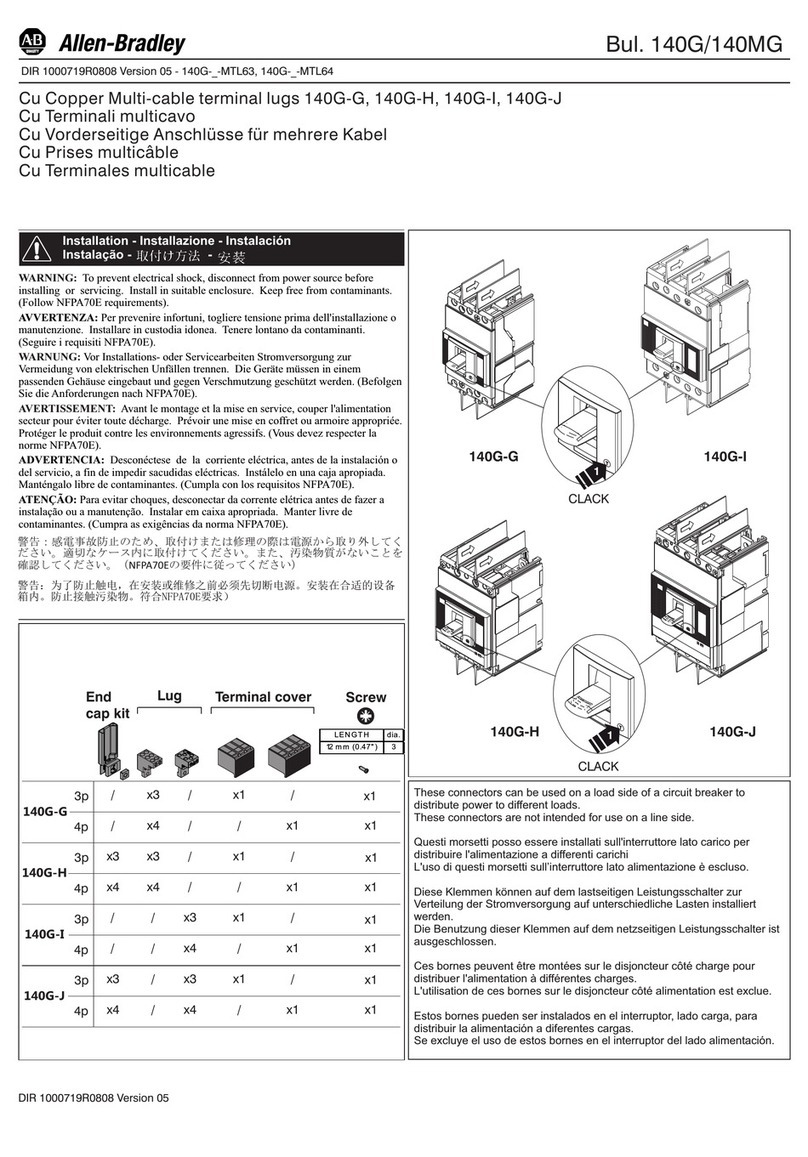
MEDIUM VOLTAGE PRODUCTS 55
—
2. Introduction and safe pratices
2.1. Introduction
The purpose of this manual is to provide
instructions for unpacking, storage, installation,
operation, and maintenance for VM1/A/P vacuum
circuit breaker. This manual should be carefully
read and used as a guide during installation, initial
operation, and maintenance.
The specific rating of each model circuit breaker
are listed on the individual nameplate. The VM1/
A/P circuit breaker are protective device. As such,
they are maximum rated device.
In no event should they be applied outside of their
nameplate ratings.
The VM1/A/P type vacuum circuit breakers are
switchgear.
In respect of the technical characteristics, VM1/
A/P circuit breakers are suitable for operation of
electric circuits under normal and fault service
conditions.
The vacuum circuit breakers have particular
advantages when used in systems with a high
frequency of operations and/or which lead to a
type vacuum circuit breakers stand out for their
particularly high operating reliability, extremely
long useful life expectancy and for being
The VM1/A/P type vacuum circuit breakers are
available in the withdrawable version. The basic
structure is shown in the “Technical data” section.
2.2. Safe practices
VM1/A/P circuit breakers are equipped with high
energy / high speed mechanisms. The design
includes several interlocks and safety features
which help ensure safe and proper operating
sequences. To ensure safety of personnel
associated with installation, operation, and
maintenance of these circuit breakers, the following
recommendations must be followed:
Only qualified persons, as defined in the National
Electric Safety Code, who are familiar with the
installation and maintenance of medium voltage
circuits and equipment should be permitted to work
on these circuit breakers
Read these instructions carefully before attempting
any installation, operation, or maintenance of these
power circuit breakers.
Do not work on an energized circuit breaker.
Do not work on a circuit breaker unless all
components are disconnected by means of a
visible break and securely grounded.
Do not work on a circuit breaker with power
supplied to the secondary control circuit.
Do not defeat safety interlocks. This may result in
bodily injury, death and/or equipment damage.
Do not work on a closed circuit breaker.
Do not work on a circuit breaker with charged
energy capacitors.
Do not use a circuit breaker by itself as the sole
means of isolating a high voltage circuit.
Do not leave a circuit breaker in an intermediate
position in a cell. Always place the circuit breaker
in the disconnect, test or connect position.
WARNING
The circuit breakers described in this book
are designed and tested to operate within
their nameplate rating. Operation outside
of these ratings may cause equipment to
fail, resulting in property damage, bodily
injury and/or death.
All safety codes, safety standards and/or
regulations as they may be applied to this
type of equipment must be adhered to
strictly.
NOTE
Failure to observe the requirements of
osha standard 1910.269 Can cause death
or severe burns and disfigurement. That
standard specifically prohibits the
wearing of polyester, acetate, nylon, or
rayon clothing by employees working with
exposure to electric arcs or flames.
